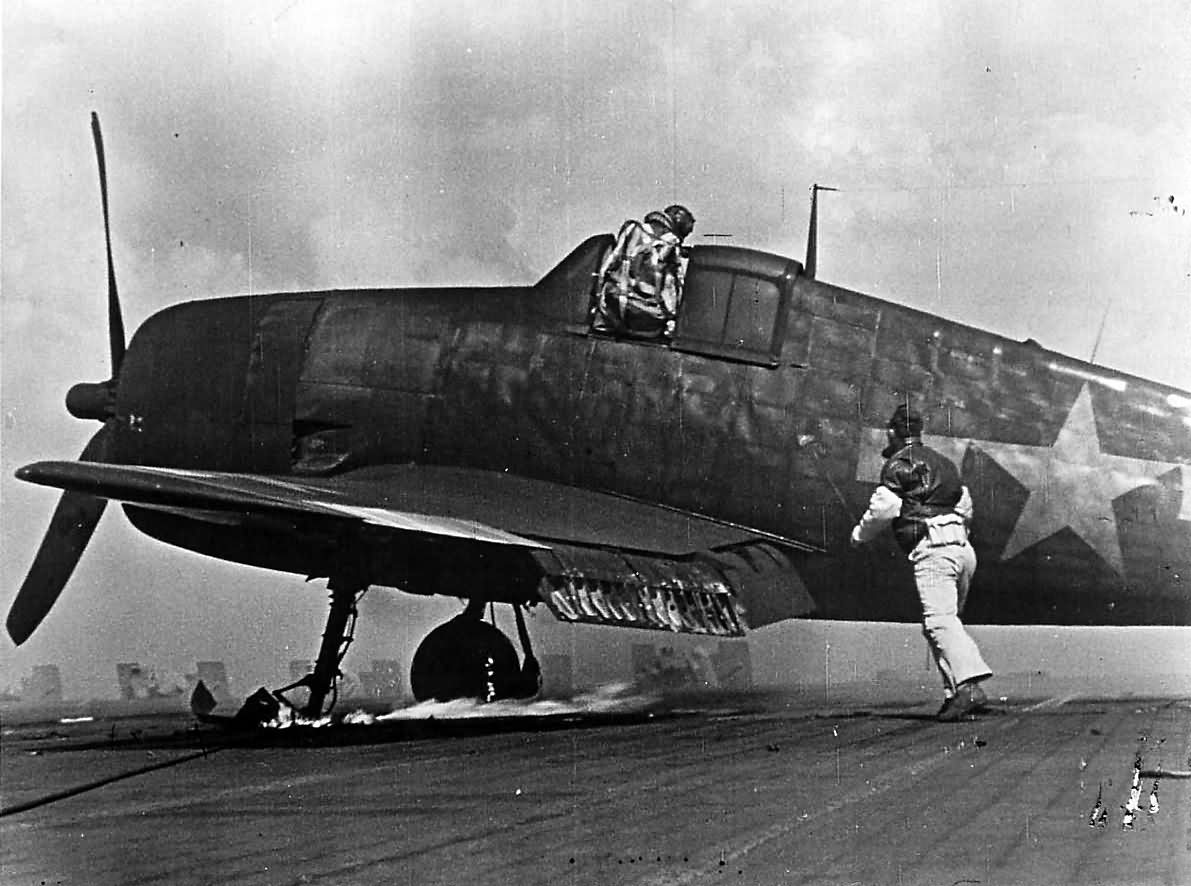The F6F-5 Hellcat entered service in late summer 1944, just in time to replace its predecessor, the F6F-3, on many carriers. VF-13 was the first unit to equip with the new F6F-5, embarking on the USS Franklin (CV-13). While standard F6F-5s replaced the earlier models, specialized versions like the photographic F6F-5P and night-fighting F6F-5E/-5N supplemented rather than replaced their F6F-3 counterparts.
Shifting Battles and New Threats – Kamikaze
As the war moved towards Japan, the Hellcat encountered more capable land-based Japanese aircraft like the Ki-84 Hayate and J2M Raiden. Although these fighters had better performance, their numbers were insufficient to threaten the air superiority held by the Hellcat. In fact, the Hellcat still managed favorable kill ratios of 9.5:1 against the Ki-84 and 3.7:1 against the J2M.
However, Japan’s most significant threat by the war’s end became the kamikaze attacks. Beginning in October 1944 during the Battle of Leyte Gulf, kamikaze attacks increased as Japan faced a shortage of skilled pilots. Kamikaze Special Attack Corps pilots, indoctrinated with a sense of spiritual duty, posed a new type of menace that became more dangerous than Japan’s navy itself.
Naval Response and Hellcat Deployment
In response, the US Navy shifted carrier fighter squadrons from bombers to Hellcats in an effort to counter the kamikaze threat. However, there was a shortage of fighter pilots, so a plan was devised to convert dive-bomber and torpedo-bomber pilots into fighter pilots. When this process took too long, the decision was made to use US Marine Corps squadrons, already proficient with land-based F4U Corsairs, to fill in the fighter gap.
The Corsair had been cleared for carrier use in April 1944, and by January 1945, four Essex-class carriers—including the USS Bennington, USS Wasp, USS Bunker Hill, and USS Essex—embarked Marine Corsair squadrons to supplement their fighter strength. These squadrons operated alongside Hellcats, and Marine Carrier Air Group One (MCVG-1) was formed to manage these mixed squadrons.
Carrier Air Group Changes
To accommodate the increased fighter complement, carriers reduced their SBD Dauntless dive-bombers and replaced them with Hellcats and Corsairs. Essex-class carriers now carried 60 fighters (Hellcats and Corsairs), along with 15 TBF Avengers and 24 SB2C Helldivers. Smaller carriers like the Independence carried fewer Avengers but maintained a strong fighter presence with 24 Hellcats or Corsairs.
By March 1945, larger carriers were operating with up to 72 fighters. Some Marine squadrons were gradually replaced by Navy units, with VF-80 on USS Ticonderoga and VF-20 on USS Lexington each flying 73 Hellcats, while also carrying 15 Helldivers.
Hellcat and Corsair Collaboration
From this point in the war, both the Hellcat and Corsair shared deck space on many carriers. While their primary role was anti-kamikaze defense, they continued to participate in other missions. The Corsair excelled in ground attack operations, while the Hellcat focused on air cover.
Despite intense kamikaze attacks, the Hellcat and Corsair pilots’ skills improved, and they became adept at intercepting and destroying kamikaze planes before they could strike their targets. However, kamikazes still inflicted severe damage. By the end of the war, they had sunk 34 ships, damaged 368 others, and killed 4,900 Allied sailors. In total, the US claimed to have shot down 2,800 kamikazes, but Japan had lost around 3,900 kamikaze pilots in these suicide missions.
Though the kamikaze threat remained significant, the combined efforts of the Hellcat, Corsair, and the entire Allied fleet ensured that kamikaze attacks did not have a larger impact on the war’s outcome.
